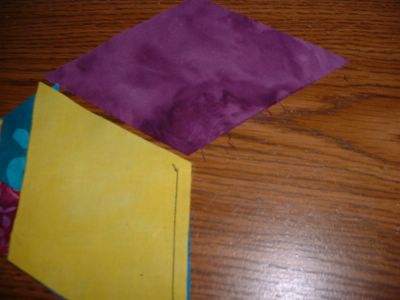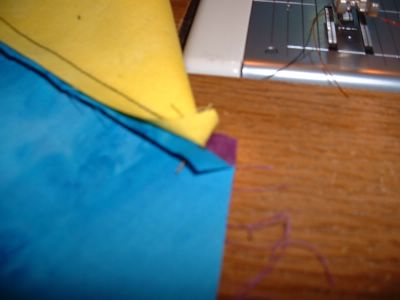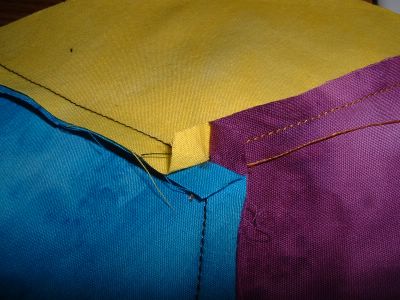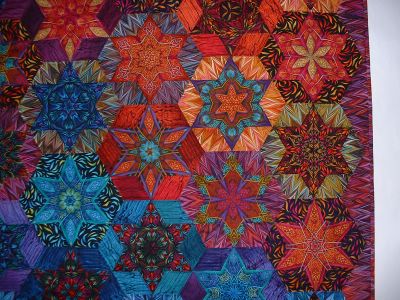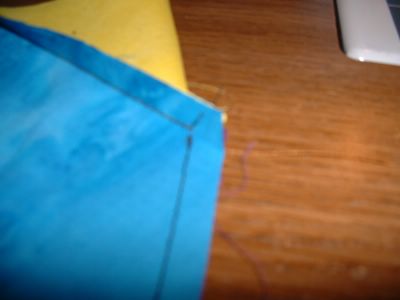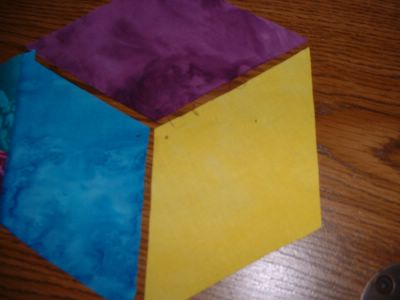
Let's say we"re sewing together three diamond shaped patches, yellow blue and purple.
The first thing I like to do is put a small dot with a pencil or water-soluble pen , at the point on the diamond where two quarter-inch seams meet. This is the place where I will only sew up to but not beyond it into the seam allowance. Because the seam allowance is going to be free it allows me to move the seams in whichever direction will give the flattest seam when I get ready to press, and also lets the pivot the seams when I am sewing.
